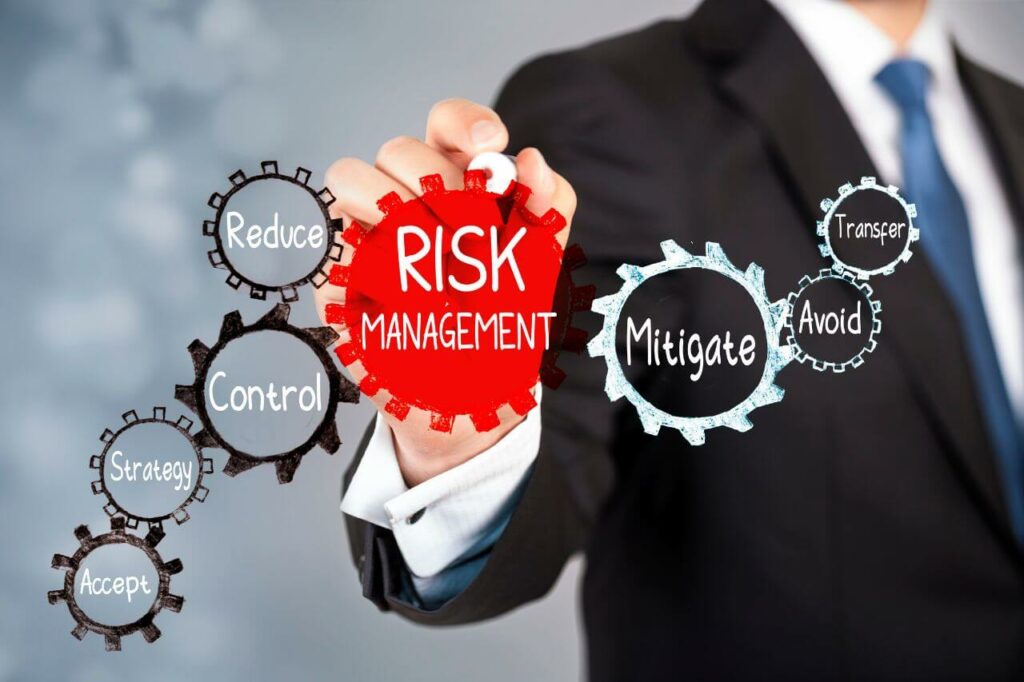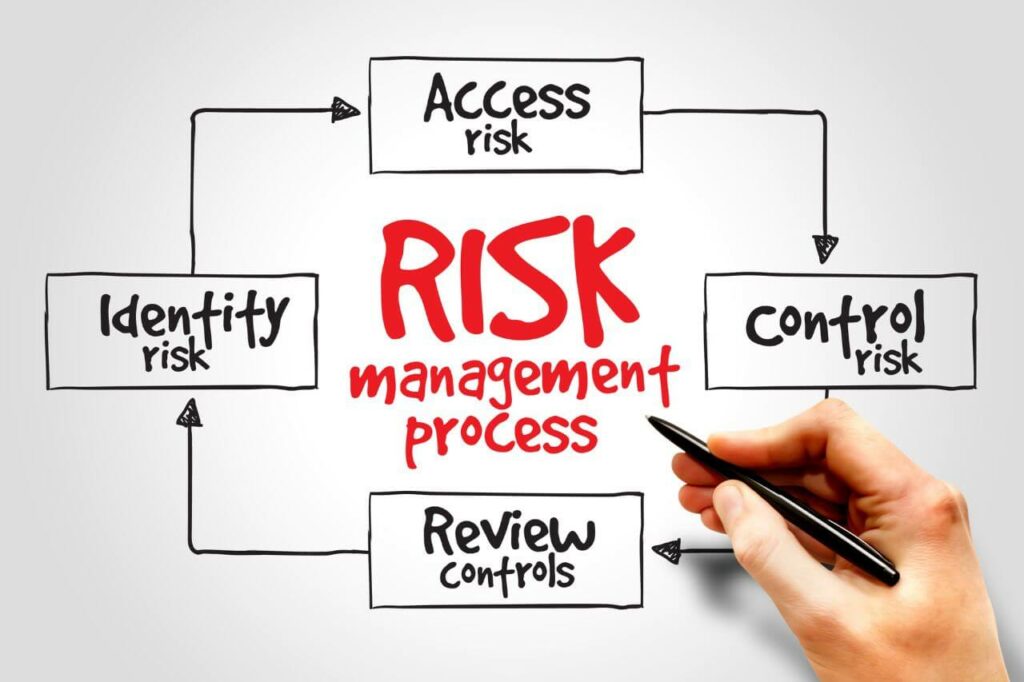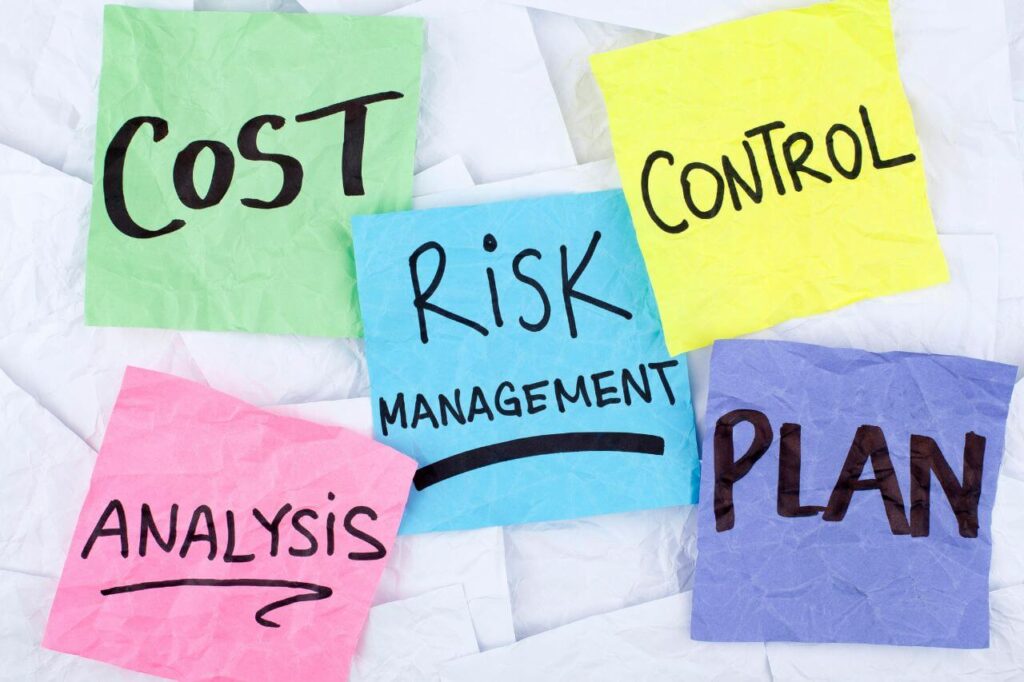There’s one thing that I probably say every day. “Risk is inherent”. And as a project manager, these are words you should live by.
You need to understand that for any project you undertake, from the moment you identify the business need, there are various risks that seem geared to ensure that you fail in developing a solution to the need.
Managing risks is more critical than ever in today’s fast-paced business world. Delivering successful projects within the given constraints relies heavily on your ability to manage the various project risks.
Risk management is a formal process group for projects using the waterfall approach with laid-out processes to be tailored according to the scale and nuances of your individual projects. As for Agile projects, not so much.
With the Agile approach gaining popularity, businesses must find ways to integrate risk management into their Agile processes especially when trying to practice Agile at scale like with SAFe.
Enter ROAM risk management which is a technique used in Agile development. This blog post will explore the basics of managing risks with ROAM in Agile and how it can help businesses mitigate risks effectively.
What is ROAM Risk Management?
ROAM is a collaborative, lightweight risk management technique that a lot of Agile teams have adopted for managing risks in projects.
It’s built on a visual pull-based model and styled in a Kanban fashion approach to risk management and is a simple and effective way to manage risks in an Agile environment.
ROAM risk management helps teams identify, prioritize, and manage risks during development sprints. Using ROAM, teams classify risks into four categories: Resolved, Owned, Accepted, and Mitigated.
The goal of ROAM is to ensure that risks are appropriately addressed and that the project can continue without major setbacks.

ROAM Risk Management in Agile
Agile is a methodology that was developed to allow businesses to adapt quickly to changing customer needs and market conditions.
Complex problems and needs require adaptive solutions and that’s the aim of Agile. It’s a process that emphasizes collaboration, flexibility, and customer satisfaction.
However, the downside is that with its embrace of change and the use of short iterations, planning, and managing risks becomes very challenging.
ROAM provides a structure for identifying, prioritizing, and managing risks in an Agile environment. By classifying risks into four categories, teams can effectively manage risks throughout the development process.
Let’s take a closer look at each of the ROAM categories.
1. Resolved
The risks that are classified in this category as Resolved risks are those that have been fully addressed and are no longer a concern.
They’re considered resolved because the team has taken the necessary steps to mitigate them. Resolved risks should be documented and tracked to ensure that they don’t reappear.
2. Owned
Owned risks are those that have been identified, but no action has been taken to address them.
These risks are assigned an owner who’s responsible for ensuring that they’re addressed by tracking the risk and taking appropriate action to resolve or mitigate it.
3. Accepted
Accepted risks are those that the team has decided not to address. These risks aren’t considered critical to the success of the project and are accepted as part of the development process.
Also, the team may conclude that there’s no way to mitigate or resolve the risk, or the cost of doing so exceeds the potential costs if the risk occurs.
Accepted risks should be documented and tracked to ensure that they don’t become more critical.
4. Mitigated
Mitigated risks are those that have been partially addressed but still require additional action. These risks are considered critical to the success of the project and should be closely monitored.
The team should continue to work on mitigating these risks until they are resolved.

Implementing ROAM Risk Management in Agile
For any form of project management, risk management is an ongoing process throughout the project life cycle.
For projects using the Agile methodology which doesn’t have a formal risk management approach, ROAM risk management can be the game changer in maximizing success.
Implementing ROAM in Agile development involves the following steps:
1. Identify Project Risks: The first step is to identify all potential risks associated with the project. The team should brainstorm and list all possible risks, no matter how small.
2. Classify the Risks: The next step is to classify each risk into one of the four ROAM categories. This helps the team prioritize risks and determine the appropriate actions needed.
3. Assign Owners: Once risks are classified, owners should be assigned to each risk. Owners are responsible for ensuring that the risks are adequately addressed.
4. Take Action: Once owners are assigned, They should immediately take appropriate actions to address each risk. This could include implementing additional controls or changing the project plan.
5. Monitor Progress: The team should continually monitor the progress of each risk and adjust the plan as needed.

Benefits of Using ROAM Risk Management in Agile
There are a ton of benefits you stand to get from using the ROAM risk management technique for your Agile projects. These include:
1. Improved Risk Management
By using ROAM, Agile teams can more effectively manage risks and prioritize actions to mitigate them.
The framework provides a standardized approach to risk management, making it easier for teams to identify and address potential issues.
2. Increased Collaboration
ROAM risk management promotes collaboration and communication among team members.
By working together to identify and prioritize risks, team members can ensure that everyone’s on the same page and working toward the same goals.
3. Better Decision-Making
ROAM helps Agile teams make better decisions by providing a clear picture of the potential impact of risks.
By evaluating risks based on their likelihood and impact, they can make more informed decisions about how to mitigate them.
4. More Efficient Resource Allocation
By prioritizing risks based on their potential impact, teams can more efficiently allocate resources to address the most critical risks.
This can help teams stay on track and avoid delays or unexpected setbacks.
5. Enhanced Transparency
Transparency is a pillar of Agile and ROAM promotes it by providing a clear and standardized approach to risk management ensuring that everyone on the team is aware of potential risks and how they’re being addressed.
6. Increased Project Success
By effectively managing risks, teams are more likely to deliver projects on time, within budget, and with the desired level of quality.
ROAM can help teams achieve these outcomes by providing a framework for proactive risk management.
7. Flexibility
Agile development is all about flexibility and adaptability, and ROAM risk management supports this by allowing teams to adapt to changes in project requirements or priorities.
By using a standardized risk management approach, teams can more easily pivot as needed and remain agile throughout the project lifecycle.
8. Early Risk Identification
ROAM encourages teams to identify and address risks early in the project, which can help prevent them from becoming bigger issues later on.
By proactively managing risks, teams can avoid delays, cost overruns, and other negative consequences.
9. Improved Stakeholder Engagement
By involving stakeholders in the risk management process, teams can build trust and collaboration with key project partners.
This can help ensure that stakeholders are aware of potential risks and are involved in mitigating them.
10. Improved Communication
ROAM risk management promotes improved communication among team members and stakeholders, which can help prevent misunderstandings and ensure that everyone is on the same page.
By using a standardized approach to risk management, teams can more easily communicate risks and mitigation strategies to others.

How to Use ROAM Risk Management at Every Level
ROAM is a flexible framework that can be used at all levels of Agile development. Here are some examples of ROAM risk management at various levels:
1. Sprint Level
ROAM can be used at the sprint level to identify and address risks that may impact the current sprint.
Risks can be classified and prioritized according to their potential impact on the sprint, and appropriate mitigation measures can be implemented.
2. Program Level
ROAM can be used at the program level to identify and manage risks that may affect multiple sprints or teams within the program.
Risks can be assessed based on their potential impact on the program, and appropriate mitigation measures can be implemented.
3. Portfolio Level
ROAM can be used at the portfolio level to identify and manage risks that may impact the overall project portfolio.
Risks can be assessed based on their potential impact on the portfolio, and appropriate mitigation measures can be implemented.
4. Organizational Level
At the organizational level, ROAM can be used to identify and manage risks that may impact the entire organization.
Risks can be evaluated based on their potential impact on the organization, and appropriate actions can be taken to mitigate them.
How to Create a ROAM Board
A lot of teams when using ROAM risk management use a board that is similar to a Kanban board to visualize risks across different levels. It’s a simple and effective way to manage risks in Agile development.
This board allows teams to visualize and prioritize risks and track the progress of actions taken to mitigate them. To create a ROAM board, follow these steps:
1. Create a Board
It goes without saying that you need to create an actual board first. It could be physical or digital but needs to be accessible to your team.
The board should be divided into four columns, one for each ROAM category: Resolved, Owned, Accepted, and Mitigated.
2. Identify Risks
The team should then identify all potential risks associated with the project and write each one on a sticky note or card.
3. Classify the Risks
Based on the potential impact of each risk, classify them into one of the four ROAM categories.
4. Prioritize the Risks
Prioritize risks based on their potential impact on the project, and place the most critical risks at the top of each column.
5. Take Action
For each risk, identify and assign actions that can be taken to mitigate them. Write each action on a separate sticky note or card and place it below the associated risk.
6. Monitor Progress
Continually monitor the progress of each risk and the action taken to address them. Move cards between columns as risks are addressed and actions are taken.

ROAM Risk Management Best Practices
To use the ROAM risk management technique for your Agile projects effectively, here are some best practices to follow:
1. Involve Your Whole Team
Management is an art of inclusion and teamwork. Involving all team members in the processes of risk identification and classification ensures that fewer risks slip under the radar and those identified are classified correctly.
2. Prioritize Identified Risks
Once risks are identified, it’s important to prioritize them according to their likelihood of occurrence and potential impact on your project.
This prioritization can be done using qualitative and quantitative risk analysis methods. By doing this, informed decisions can be made on the identified risks ranging from which to address first and which could be accepted.
3. Monitor Risks Constantly
Risk management is an ongoing activity throughout the project life cycle for good reason. For project success, you must keep risks in check always.
Risks should be constantly monitored to ensure that they’re appropriately addressed. This is done by tracking every identified risk to ensure the risk strategy is being followed, examining the efficacy of the strategy, and adjusting strategy and plans as required.
4. Proper Documentation
Projects that are managed with the waterfall approach use a risk register for documentation of identified risks.
While Agile focuses on working software over extensive documentation, the keyword in that Agile principle is extensive as some documentation is always important.
All risks, actions taken, and progress made should be documented to ensure that there’s a clear record of what has been done and what still needs to be addressed. A risk-adjusted backlog can be used for this.
5. Effective Communication
Communication is a recurring best practice in any project, and it’s estimated that you spend up to 80% of your time on communication as a project manager.
It’s very important that there’s effective communication across board when managing risks in agile development.
You need to ensure that all team members are aware of the risks and the actions being taken to address them.
Conclusion
I know that risk management isn’t straightforward, especially with Agile projects.
However, if you’re struggling with managing risks, using ROAM risk management technique can be a game-changer especially when done properly as advised in this post.
FAQs
What is the Difference Between Owned and Accepted in ROAM?
Owned risks are those that a team member is responsible for monitoring and addressing, while accepted risks are those that are acknowledged but not within the control of the team.
In the ROAM Technique, What Does it Mean to Resolve a Risk?
Resolving a risk means completely eliminating a risk or preventing it from occurring altogether. This is typically done by identifying the root cause of the risk and implementing a solution or mitigation strategy to address it.
By resolving a risk, the team ensures that it will not pose a threat to the project’s success in the future.





